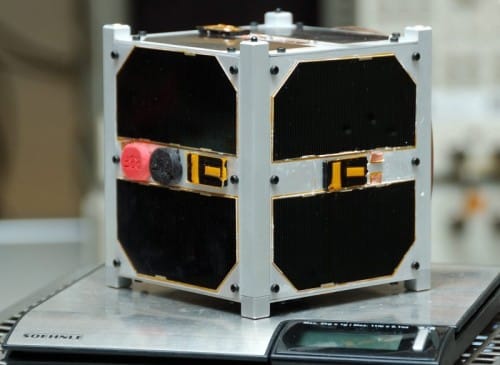A ten cm satellite weighing hundreds of grams - built in Israel by students at the Herzliya School of Science will be launched into space this coming April.

On the occasion of Israeli Space Week, which will open on January 26, an unveiling of a new project of the Israel Space Agency at the Ministry of Science: a new pico-satellite - a ten-cm satellite weighing hundreds of grams - built in Israel by students at the School of Science in Herzliya and will be launched into space in a month this April It is actually a technological advance that today allows every person to build a personal tiny satellite into space. This is a phenomenon that has become a global trend to which Israel is now joining for the first time.
The tiny satellite that is being built with the support of the Israel Space Agency at the Ministry of Science, Dokifat, is now in the final stages of assembly by a group of about 40 children aged 16-17. The current students in the team are a link in a chain of students that has been working on the satellite for more than five years. The satellite undergoes tests in the clean room at the school in Herzliya and in about a month it will undergo pre-launch tests in the aviation industry.
The size of the satellite - 10 x 10 x 10 cm - is also its advantage. It weighs a few hundred grams and is therefore cheaper to develop and launch, compared to the usual satellites that weigh hundreds of kilograms and require much more energy and millions of dollars to launch and operate them in space. The shape of the satellite is a cube inside which is an operating system, a communication system and electricity.
The satellite will help travelers who get lost in a place where there is no cellular reception. The traveler will be able to send distress signals from an amateur radio to the tiny satellite, which in turn will transmit to a center on Earth and send a rescue. Since about 70% of the Earth is covered by oceans, these are huge areas where there is no cellular reception. The satellite will circle at an altitude of 600 km and will stay in space for about two years. The satellite will circle the Earth every hour and a half and will respond to 4,000 km each time - and will cover the entire Earth in a few hours. There is no satellite that provides such an answer today.
The satellite will be launched from Russia along with several other tiny satellites. A year later, it will be joined by the Dokifat 2 satellite, which will be launched from Brazil along with about 50 other tiny satellites as part of a global project called "Cube50". All over the world the tiny satellites are built by students, while in Israel it is a group of young students who did all the stages of planning and construction themselves. The fifty tiny satellites will be sent into space together and will be several hundred kilometers apart and will record everything that happens around them. Such a wide network of satellites can give a picture of the thermosphere - a region of the atmosphere with very strong ultraviolet radiation that has not yet been studied.
This is a global trend of tiny satellites that has gained momentum in recent years. The components can be purchased online.
In 2006, NASA launched a tiny satellite called GeneSat with bacteria inside, and tested how they react to conditions of radiation and stress. The satellite transmitted images of the bacteria to Earth and enabled analysis of the research results in real time. Such research is especially important for the planning of journeys from Earth and its effect on living beings.
A team of professional instructors who work with them, especially worthy of mention is Shamai Opfer, a radio enthusiast who manages the entire issue of satellite and ground station communication. And Ariel Yaffe, a software engineer who manages the subject of ground and airborne software with great talent.

One response
Well done…
It is clear that the tiny satellites are a breakthrough in the conquest of space.
Without delving into the subject, it is clear that this is possible thanks to cellular communication,
which has developed at a huge pace in recent years.
When tiny smartphones are able to do so much today,
There is no reason not to send improved versions of them to space as well...